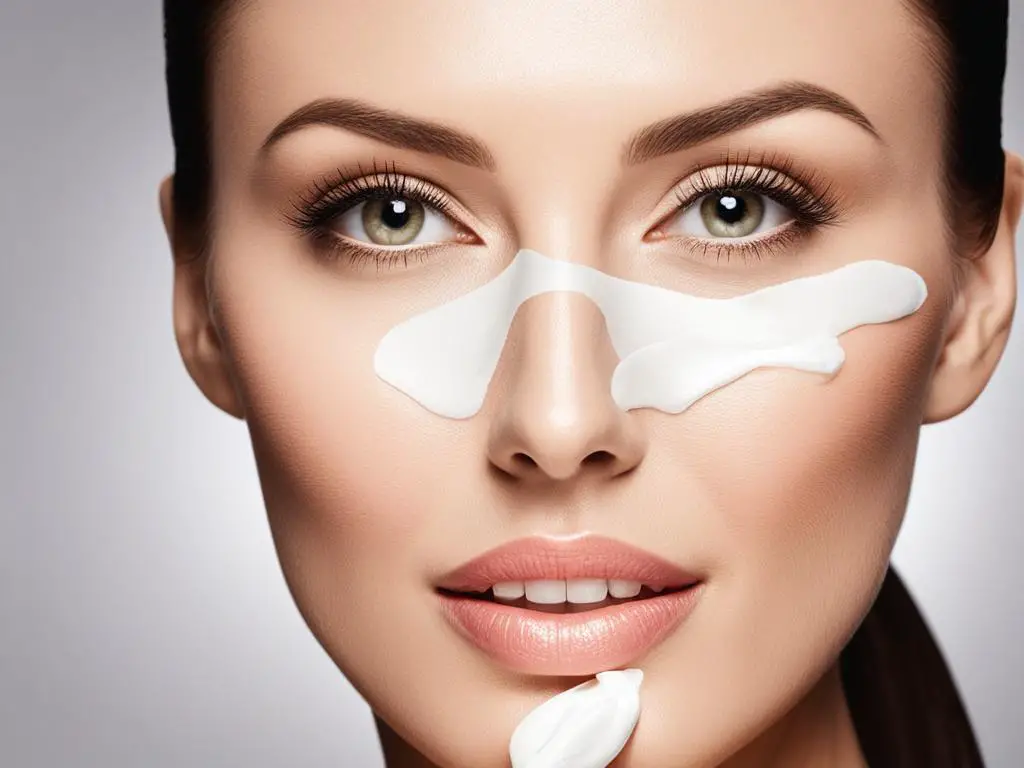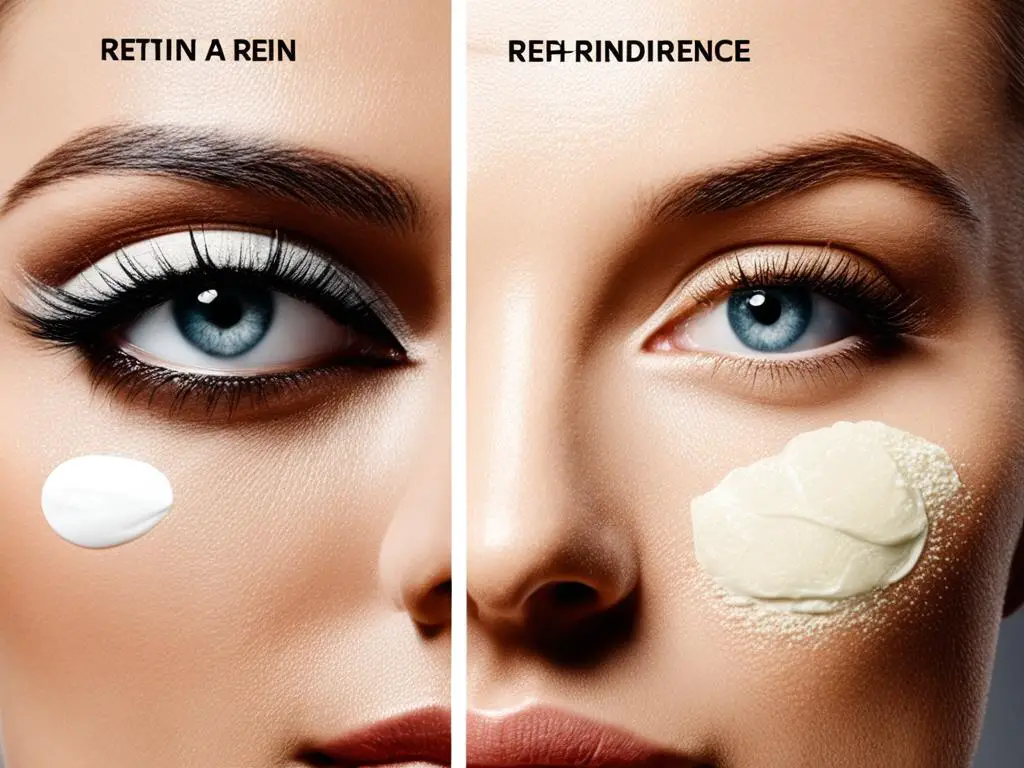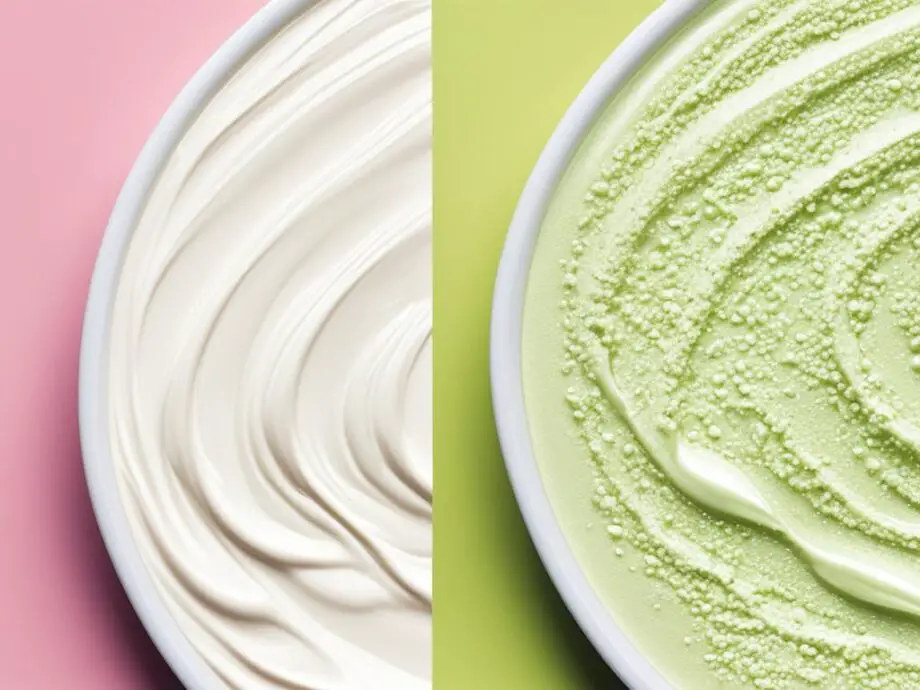Retin A cream and gel are both topical prescription medications that contain tretinoin, a form of vitamin A. They are commonly used to treat acne and signs of aging. The cream is often prescribed for signs of aging, such as fine lines, wrinkles, and dark spots, while the gel is primarily used for acne treatment. Both have been proven effective in reducing signs of aging and improving acne, but they have slightly different formulations and may be better suited for different skin types or preferences.
Creams generally have higher concentrations of tretinoin and may be less irritating to the skin because they are water-based and often include moisturizers. Gels, on the other hand, can be more initially irritating to the skin but dry quickly and may be preferred by those with oily skin. It is recommended to apply either the cream or gel once a day before bed for optimal results.
Key Takeaways:
- Retin A cream and gel both contain tretinoin and are used for treating acne and signs of aging.
- Creams are typically used for signs of aging, while gels are primarily for acne treatment.
- Creams have higher concentrations of tretinoin and may be less irritating, while gels dry quickly and can be preferred by those with oily skin.
- Apply either the cream or gel once a day before bed for best results.
- Consult with a medical provider to determine which formulation is best for your skin’s needs.
How Does Retin A Cream Work?
Retin A cream is a topical prescription medication that contains tretinoin, a form of vitamin A. It is widely used for its numerous benefits in reducing signs of aging and improving skin texture. The cream works by lightening the skin and promoting the replacement of old skin cells with new ones, resulting in a more youthful appearance.
When applied regularly, Retin A cream can effectively reduce the appearance of fine lines, wrinkles, dark spots, and rough skin. It stimulates the body’s skin cell renewal process, accelerating the production of collagen and elastin, two proteins responsible for maintaining skin’s firmness and elasticity. As a result, the cream helps to improve the overall texture and tone of the skin, giving it a smoother and more youthful look.
Clinical studies have shown that tretinoin, the active ingredient in Retin A cream, is particularly effective in reducing signs of aging caused by sun damage. It can help to repair sun-damaged skin by encouraging the shedding of damaged cells and promoting the growth of healthier cells. This process leads to a significant improvement in the appearance of sunspots, fine lines, and wrinkles.
In addition to its anti-aging benefits, Retin A cream is also frequently used for the treatment of acne. The cream helps to reduce the number and severity of acne breakouts by unclogging pores and preventing the formation of new pimples. It also promotes faster healing of existing pimples, resulting in a clearer complexion.
Despite its numerous benefits, it is important to note that Retin A cream can cause side effects, including redness, burning, itching, peeling, and changes in skin color. These side effects are typically mild and temporary, and they can be minimized by starting with a lower strength of the cream and gradually increasing as tolerated.
Overall, Retin A cream is a highly effective treatment for signs of aging and acne. Its ability to improve skin texture, reduce fine lines and wrinkles, and promote a clearer complexion makes it a popular choice among dermatologists and skincare enthusiasts alike.

| Benefits of Retin A Cream | Side Effects of Retin A Cream |
|---|---|
|
|
How Does Retin A Gel Work?
Retin A gel is a topical medication that contains tretinoin, a derivative of vitamin A. It is primarily used for the treatment of acne, but it can also have anti-aging effects, making it a versatile option for those looking to improve their skin. The gel works by promoting skin cell renewal, which helps to unclog pores, reduce inflammation, and minimize the formation of new acne lesions.
Clinical studies have shown that topical tretinoin gel can significantly reduce the visibility of acne by up to 45% after 12 weeks of use. This makes it an effective choice for individuals struggling with acne breakouts and looking for an improvement in their skin’s appearance. By promoting the shedding of dead skin cells and preventing the buildup of oil and debris, retin A gel can help to clear existing acne and prevent new breakouts from occurring.
When applying retin A gel, it is important to start with a lower strength and gradually increase as tolerated. This allows the skin to adjust to the medication and minimizes the risk of side effects. Some users may experience redness, dryness, and peeling initially, but these symptoms usually subside as the skin adapts to the treatment.
One of the advantages of retin A gel is its quick-drying formula. Unlike creams that can leave a shiny residue on the skin, the gel dries quickly and does not have a greasy or heavy feel. This can be especially beneficial for those with oily skin or those who prefer a lightweight, non-greasy texture.
However, it is important to note that like other retinoid medications, retin A gel may cause side effects such as skin irritation, redness, and peeling. These side effects are usually mild and temporary, but it is essential to follow the recommended application instructions and consult with a healthcare professional if any severe or persistent reactions occur.
| Retin A Gel Benefits | Retin A Gel Side Effects |
|---|---|
| Reduces acne visibility | Skin irritation |
| Helps unclog pores | Redness |
| Promotes skin cell renewal | Peeling |
| Prevents new acne breakouts | |
Comparison of Retin A Cream and Gel
Both Retin A cream and gel contain tretinoin and have been proven effective in treating acne and signs of aging. The main difference between the two is their formulation and intended use.
Retin A cream is often prescribed for signs of aging, including fine lines, wrinkles, and dark spots. It works by lightening the skin and promoting the replacement of old skin cells with new ones. The cream stimulates the body’s skin cell renewal process, resulting in improved texture and tone. It is typically water-based and may include moisturizers to reduce irritation. Creams generally have higher concentrations of tretinoin and may be less irritating to the skin. The cream is commonly recommended for individuals with dry or sensitive skin.
Retin A gel, on the other hand, is primarily used for acne treatment. It works by promoting skin cell renewal, reducing the number and severity of pimples. Like the cream, the gel contains tretinoin and can have anti-aging effects. Gels are typically alcohol-based and dry quickly on the skin. While the gel may be more initially irritating, it can be preferred by those with oily skin due to its mattifying effect. The gel is commonly recommended for individuals with acne-prone or oily skin.
The choice between Retin A cream and gel depends on individual preferences and skin type. Here is a comparison of the key differences:
| Retin A Cream | Retin A Gel |
|---|---|
| Formulation | Water-based |
| Intended Use | Treating signs of aging |
| Concentration of Tretinoin | Higher |
| Moisturizing Properties | Yes |
| Irritation Potential | Lower |
| Drying Time | N/A |
| Preferred for | Acne treatment |
| Skin Types | Dry or sensitive |
| Preferred by | Oily skin individuals |
When using either the cream or gel, it is recommended to start with a lower strength and gradually increase as tolerated. Both formulations can cause side effects such as redness, dryness, and peeling. It is important to follow the recommended application instructions and protect the skin from increased sensitivity to sunlight by using sunscreen. Ultimately, consulting with a medical provider will help determine which option is best suited for an individual’s specific needs.

Side Effects of Retin A Cream and Gel
Both Retin A cream and gel can cause mild side effects such as redness, itching, burning, and peeling of the skin. These side effects are usually temporary and diminish as the skin adjusts to the medication. It is important to follow the recommended dosing and application instructions to minimize the risk of side effects. If any side effects become severe or persist for a long time, it is advisable to contact a medical provider for guidance.
Both the cream and gel can increase the skin’s sensitivity to sunlight. Therefore, it is crucial to use sunscreen with a high SPF and avoid excessive sun exposure while using these medications. Protecting your skin from harmful UV rays can help prevent further damage and maintain the effectiveness of the treatment.
It is important to note that while Retin A cream and gel can produce desirable results for many individuals, they may not be suitable for everyone. It is essential to consult with a healthcare professional to determine the most appropriate treatment option and minimize the risk of experiencing side effects.
| Side Effects of Retin A Cream | Side Effects of Retin A Gel |
|---|---|
| – Redness | – Redness |
| – Itching | – Itching |
| – Burning | – Burning |
| – Peeling of the skin | – Peeling of the skin |
| – Skin sensitivity to sunlight | – Skin sensitivity to sunlight |
Conclusion
When deciding between Retin A cream and gel, it is important to consider individual preferences, skin type, and the specific condition being treated. Both formulations contain tretinoin and have been proven effective in reducing signs of aging and improving acne.
Creams are often prescribed for signs of aging and may be less irritating to the skin due to their moisturizing properties. They provide hydration and can help improve the overall texture and appearance of the skin.
Gels, on the other hand, are primarily used for acne treatment and may be preferred by those with oily skin. They have a lightweight texture, dry quickly, and can help control excess oil production.
It is recommended to start with a lower strength of either the cream or gel and gradually increase as tolerated. This allows the skin to adjust to the medication and minimizes the risk of side effects.
It is also important to be aware of possible side effects such as redness, dryness, and peeling, and to use sunscreen to protect the skin from increased sensitivity to sunlight. Consulting with a medical provider is crucial to determine the best option for your skin’s needs and to ensure proper usage.
FAQ
What is the difference between Retin A cream and gel?
Retin A cream and gel both contain tretinoin and are used to treat acne and signs of aging. The cream is often prescribed for aging concerns, such as fine lines and wrinkles, while the gel is primarily used for acne treatment. Creams have higher concentrations of tretinoin and may be less irritating to the skin, while gels dry quickly and can be preferred by those with oily skin.
How does Retin A cream work?
Retin A cream works by lightening the skin and promoting the replacement of old skin cells with new ones. It reduces the appearance of fine lines, wrinkles, dark spots, and rough skin. The cream stimulates the body’s skin cell renewal process, resulting in improved texture and tone.
How does Retin A gel work?
Retin A gel also contains tretinoin and works by promoting skin cell renewal. It is primarily used for acne treatment but can also have anti-aging effects. The gel reduces the visibility of acne and helps promote faster healing of existing pimples.
What is the difference in effectiveness between Retin A cream and gel?
Both Retin A cream and gel have been proven effective in reducing signs of aging and improving acne. The choice between the two depends on individual preferences and skin type. Creams typically have higher concentrations of tretinoin and may be less irritating. Gels may be initially more irritating but dry quickly and can be preferred by those with oily skin.
What are the side effects of Retin A cream and gel?
Both Retin A cream and gel can cause mild side effects such as redness, itching, burning, and peeling of the skin. These side effects are usually temporary and diminish as the skin adjusts to the medication. It is important to follow the recommended dosing and application instructions to minimize the risk of side effects.
